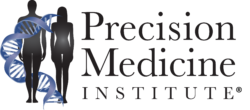As we enter a new decade, more clinical trials are concluding, more precision medications are being approved, and more genetic tests are becoming available. Still, roadblocks to better patient access remain. Here’s where hospital and health system executives should focus their efforts.
As we enter a new decade, precision medicine stakeholders might be forgiven if they can’t quite put their finger on exactly how much of a toehold they have in medicine. The indicators are mixed. On the one hand, major strides continue to be made, including clinical trial success, an increasing number of drug approvals, and more genetic tests. However, roadblocks remain in the way of better patient access. The complexities and challenges were explained and analyzed in a report released by Diaceutics titled “Pharma Precision Medicine Readiness Report 2019.”
4 Positive Precision Medicine Trends Noted for 2020
- Four in every 10 drugs approved by the US Food and Drug Administration (FDA) in 2018 were precision medicines for oncology, as well as rare infectious, autoimmune, genetic, and metabolic hematologic diseases. (As a comparison, four years earlier only two in 10 approvals were for precision medicines, according to a report from the Personalized Medicine Coalition.)
- During the 2019 American Society of Clinical Oncology’s annual meeting, 40% of the sessions were biomarker related.
- Diaceutics, which provides diagnostic data analytics to pharmaceutical companies, reports that there are more than 500 Phase 3 oncology precision medicine trials slated for completion in 2019 and 2020. It estimates that if just 20% of these studies results in FDA NDA applications, there will be more than 100 new submissions over the next two years.
- Though oncology still dominates, an increasing amount of precision medicine drug development addresses non-oncology areas, including cardiology, pulmonology, diabetes, obesity, genetic disease, endocrinology, metabolic disorders, and infectious diseases.
According to Diaceutics, “it takes about 9 months to prepare an application, [thus] we are expecting to see large amounts of FDA applications in March 2020, October 2021, and October 2022 based on when those Phase 3 trials are slated for completion. The bottom line: There are “tectonic shifts underway across the pharmaceutical business model in the vanguard of precision medicine.”
2020 Outlook for Drugs Targeted to Patients Using Biomarkers
The president of the Personalized Medicine Coalition, Edward Abrahams, agrees. He recently told STAT that his organization expects drugs targeted to patients using biomarkers are expected to exceed 230 this year, compared with five in 2008 and 132 in 2016.

Edward Abrahams, PhD (above), President of the Personalized Medicine Coalition, was recently quoted in STAT on the acceleration in 2020 of drugs targeted to patients using biomarkers. (Photo source: LinkedIn.)
There is also good news with regard to diagnostic testing, according to Diaceutics. “R&D teams continue to identify novel biomarkers and biomarker combinations at an accelerated pace in support of new treatable patients.”
However, that is where the good news ends. As Diaceutics reports, “the march forward in precision medicine is also a march towards dependency on the synchronized commercialization of precision testing, and here the march falters. Specifically, patient access to better treatments is still significantly impeded because of an ill-prepared diagnostic clinical ecosystem.”
Current Challenges of Precision Medicine in the Diagnostic Clinical Ecosystem
Among the issues that the Diaceutics’ report observes:
- Slow adoption of lab tests,
- Reimbursement challenges,
- Inadequate physician education on the value of testing,
- Lag time between publication of treatment recommendations, and recommendations regarding related diagnostic tests.
One of the issues-the lag time between publication of treatment recommendations and recommendations regarding related diagnostic tests-is a major sticking point in terms of clinical utility for patients who would most benefit. “It typically takes 36 months after launch for supportive efficient lab coverage to be achieved, taking, on average, up to 4.5 years for a diagnostic to be available to test the biomarker-positive patient population it was designed to help,” according to Diaceutics.
Even after labs adopt tests, significant gaps remain, according to Diaceutics. Its analysis suggests that by 2017 more than 150,000 patients in the US and Europe were missing potentially beneficial treatments each year “due to quality or sample management issues.”
Recommendations for Hospital and Health System Leaders
The report goes on to note how the field is mobilizing to better marry testing and treatment, an encouraging sign. The recommendations in the Diaceutics report are aimed at the pharmaceutical industry, but we culled out two that are relevant for hospital and health system leaders who wish to advance their own precision medicine efforts. Both involve better education of stakeholders with “boots on the ground” (i.e., at the point of care):
- For providers, increased efforts to promote better testing. A number of pharma companies are increasing their investment in education and outreach to pathologists and others, with an aim of improved diagnosis and elimination of harm from diagnostic errors. Examples of stakeholder collaboration include the Society to Improve Diagnosis in Medicine and Coalition to Improve Diagnosis.
- For patients, linking new therapies with messages about testing. Patients want to know early on how suitable a precision medicine therapy might be for them. A highly patient-centric messaging effort recognizes this desire and gives the patient a voice in their ultimate treatment.
The Diaceutics report concludes with barriers that need to be changed within the pharmaceutical industry. We couldn’t help but notice that these same hurdles could exist in hospitals and health systems, particularly in their C-suites. Specifically:
- Even though the benefits of optimized testing and better treatment have been clearly demonstrated and “form a transformative partnership for many diseases … the narrative around this partnership among … executives is scant at best.”
- Executives fail to recognize that timely incorporation of better testing requires investment ….
- …. and that such investment can reap ROI more quickly than imagined. Diaceutics estimates that $1 of investment in testing can drive $30 to $60 of additional treatment. (For more on how to look at ROI of a precision medicine program, see our new white paper, “Setting the Foundation for a Best-in-Class Precision Medicine Program.”)
-Dean Celia
Related Information:
Pharma Precision Medicine Readiness Report 2019
The Evolution of Biomarker Use in Clinical Trials for Cancer Treatments
Personalized Medicine Coalition
What will 2020 bring for medicine and science? We asked 16 leaders for predictions
Society to Improve Diagnosis in Medicine
Coalition to Improve Diagnosis
Setting the Foundation for a Best-in-Class Precision Medicine Program
